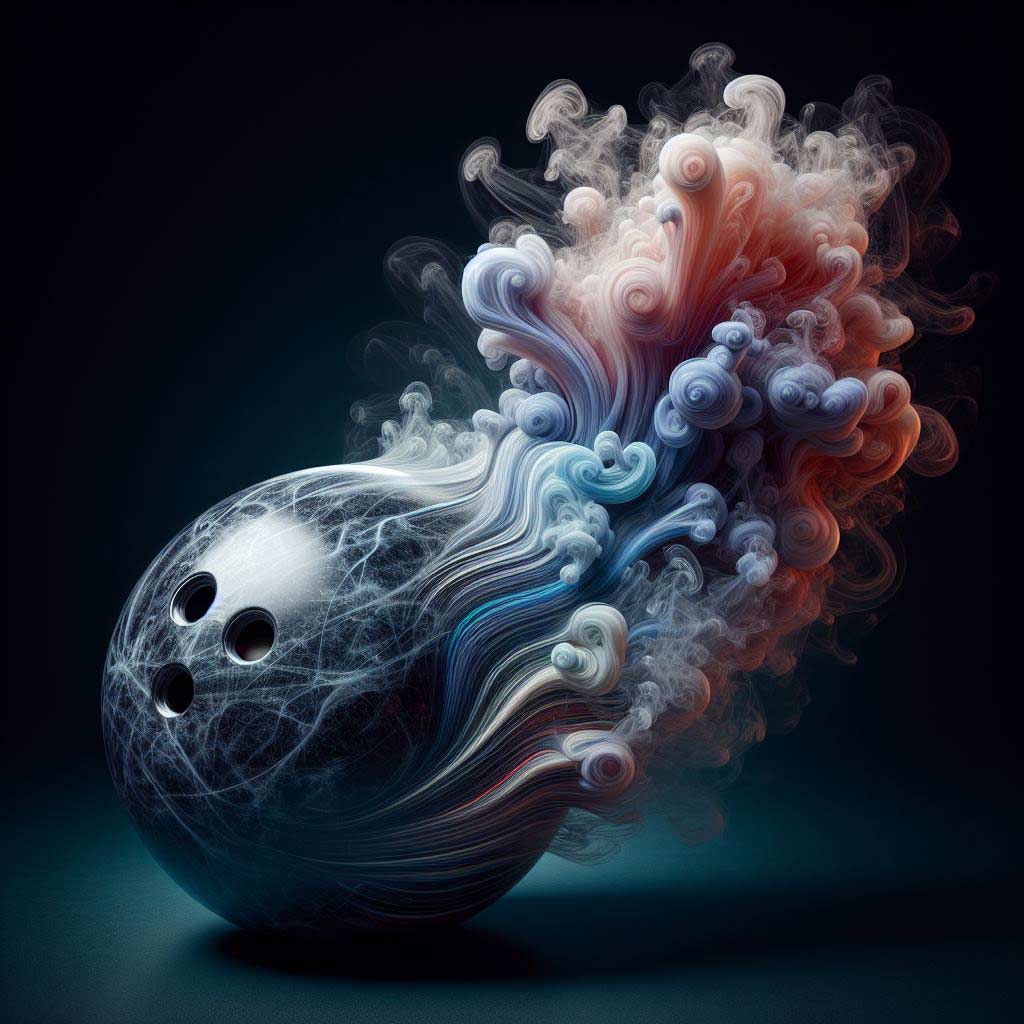Have you ever noticed a unique, pleasant scent when handling a bowling ball? Many casual bowlers are unaware that this fragrance is actually by design.
Bowling ball manufacturers intentionally infuse their products with carefully crafted aromas, from citrus notes to warm vanilla. But why would they go to such lengths to scent a piece of sports equipment?
In this article, we’ll explore the surprising reasons behind the distinctive fragrances of bowling balls. We’ll dive into the materials used to make these balls, the science behind the added scents, and the strategic purpose that manufacturers have in perfuming their products.
Whether you’re an avid bowler or just curious about this little-known fact, you’re sure to come away with a new appreciation for the olfactory experience of rolling a ball down the lane.
The Materials in Bowling Balls
To understand the reasoning behind scented bowling balls, we first need to take a closer look at the materials used in their construction. Modern bowling balls are primarily made from two main types of materials: polyester and urethane.
Polyester is one of the most common and affordable materials used in bowling ball manufacturing. It’s a synthetic polymer that provides good durability and consistent performance on the lanes.
However, polyester also has a natural chemical odor that many find unpleasant. This is due to the presence of volatile organic compounds (VOCs) that are released during the ball’s production process.
The other widely used material is urethane, which has become increasingly popular in recent years. Urethane bowling balls are known for their superior hook potential and overall performance characteristics. But like polyester, urethane also has its own distinct smell that stems from the chemical composition of the material.
These underlying odors are an unavoidable byproduct of the materials used to create bowling balls. And for many years, manufacturers simply accepted this as an inconvenient reality of the sport. Bowlers would have to contend with the somewhat unpleasant scent every time they gripped a ball and prepared to roll a frame.
Masking the Natural Odor
However, over time, bowling ball producers began to recognize that the chemical smells associated with their products were not ideal. While the performance characteristics of polyester and urethane were important, the olfactory experience of the sport also played a significant role in the overall enjoyment and appeal for many players.
This realization led bowling ball manufacturers to explore ways of masking the natural odors inherent in their materials. Their solution? Intentionally infusing the balls with various fragrances to create a more pleasant scent.
By adding designer perfumes and essences to the ball-making process, producers were able to effectively cover up the underlying chemical smells. Common scents used include:
- Citrus notes (e.g., lemon, orange, grapefruit)
- Floral aromas (e.g., lavender, jasmine, rose)
- Warm, vanilla-like fragrances
- Earthy, woodsy scents (e.g., pine, cedar)
- Fresh, clean scents (e.g., linen, ocean breeze)
These carefully curated fragrances are carefully blended and infused into the bowling ball materials during manufacturing. The result is a product that still maintains its high-performance characteristics, but with a delightful scent that enhances the overall sensory experience for bowlers.
The Purpose of Scented Bowling Balls
So, why would bowling ball manufacturers go to such lengths to ensure their products have a distinctive fragrance? There are a few key strategic reasons behind this practice:
Improved Grip and Feel
One of the primary reasons for scenting bowling balls is to improve the grip and overall “feel” of the ball for the player. The added fragrance helps bowlers establish a stronger physical and psychological connection with the equipment they’re using.
When a bowler grips a ball, the scent triggers sensory receptors in the brain. This creates a more immersive, multi-dimensional experience that goes beyond just the physical act of rolling the ball. The pleasant aroma can enhance the bowler’s focus, confidence, and even their perceived control over the equipment.
Experienced bowlers often report that a well-scented ball simply “feels” better in their hands. The fragrance provides an extra layer of sensory feedback that helps them better navigate the nuances of their delivery and release. This can translate to improved ball control, hook potential, and overall performance on the lanes.
Enhanced Sensory Experience
In addition to the functional benefits, scented bowling balls also serve to enhance the overall sensory experience of the sport. Bowling is an activity that engages multiple senses – sight, sound, touch, and now, smell.
By infusing their products with distinctive fragrances, bowling ball manufacturers are able to trigger positive associations and emotional responses in the minds of players.
The pleasant aroma can evoke feelings of nostalgia, comfort, or even excitement – all of which contribute to a more enjoyable and memorable bowling experience.
This sensory engagement is particularly important for casual bowlers who may not be as focused on technical performance. For these players, the scent of the ball can be just as much of a draw as its overall weight, balance, or hook potential. It adds an extra layer of enjoyment and engagement to the activity.
Differentiation from Competitors
From a strategic marketing perspective, the incorporation of distinctive fragrances also serves to differentiate bowling ball products in a crowded and competitive marketplace.
Bowling is a sport with a vast array of equipment options, from balls and bags to shoes and accessories. In this saturated environment, manufacturers are constantly seeking ways to make their products stand out and appeal to consumers.
By offering scented bowling balls, producers are able to create a unique selling proposition that goes beyond just technical specifications. The fragrance becomes a key differentiating factor that can influence a buyer’s purchasing decision.
Bowlers who have a preference for certain scents may be more likely to seek out and purchase balls that match their olfactory preferences. This allows manufacturers to cultivate brand loyalty and capture market share by catering to the sensory preferences of their target customers.
The Science Behind the Fragrances
Now that we’ve explored the strategic reasons behind scented bowling balls, let’s delve a bit deeper into the science and technology behind these intentionally infused aromas.
As mentioned earlier, the underlying materials used in bowling ball construction – polyester and urethane – naturally produce their own distinct chemical odors. These smells are the result of various volatile organic compounds (VOCs) that are released during the manufacturing process.
Polyester, for example, contains compounds like styrene and ethylbenzene that contribute to its characteristic chemical scent. Urethane, on the other hand, is made up of isocyanates and other reactive chemicals that also produce their own unique olfactory profile.
To counteract these undesirable natural odors, bowling ball producers turn to the science of fragrance formulation. They work closely with perfume chemists and olfactory experts to carefully select and blend various essential oils, synthetic compounds, and other aromatic ingredients.
The goal is to create a fragrance that is not only pleasing to the human nose, but also long-lasting and compatible with the bowling ball materials. The fragrance must be able to effectively mask the underlying chemical smells while also providing a consistent scent experience for the bowler, even after repeated use and exposure to the elements.
This fragrance formulation process involves a deep understanding of olfactory science, as well as extensive testing and refinement. Producers may experiment with various scent combinations, concentrations, and delivery methods to achieve the perfect balance of performance and sensory appeal.
Once the ideal fragrance has been developed, it is then infused into the bowling ball materials during the manufacturing stage. This ensures the scent is evenly distributed throughout the product and remains detectable for the duration of the ball’s usable lifespan.
Through this meticulous approach to fragrance engineering, bowling ball manufacturers are able to provide players with a multi-sensory experience that enhances the overall enjoyment and appeal of the sport.
The Enduring Appeal of Scented Bowling Balls
As we’ve explored, the intentional fragrancing of bowling balls serves a strategic purpose for manufacturers – from improving grip and feel to differentiating their products in a crowded market. But the appeal of scented bowling balls goes beyond just these business considerations.
For many bowlers, both casual and competitive, the distinctive fragrance of their equipment has become an integral part of the sport’s overall experience and tradition. The scent has become as much a part of the game as the satisfying “thud” of the ball hitting the pins or the roar of the crowd.
In a sense, the fragrance has become a sensory cue that triggers memories and emotions associated with the sport. Veteran bowlers may fondly recall the specific scents of the balls they used during their youth or early days of competition. Newer players may develop a personal attachment to the aroma of their current equipment, imbuing it with a sense of familiarity and comfort.
This emotional connection to the olfactory experience of bowling is a testament to the power of the human senses. Our sense of smell is closely tied to the limbic system in the brain, which is responsible for processing emotion and memory.
By engaging this primal sense, bowling ball manufacturers have tapped into a profound way of enhancing the sport’s appeal and cultivating a sense of nostalgia and belonging among players.
As the bowling industry continues to evolve, it’s likely that the practice of infusing balls with distinctive fragrances will endure. Bowlers have come to expect and appreciate this sensory element, and manufacturers will likely continue to invest in research and development to ensure their products maintain this unique and engaging attribute.
Conclusion
The next time you step up to the lane and feel the familiar weight of a bowling ball in your hands, take a moment to appreciate the surprisingly intricate story behind its distinctive fragrance.
This seemingly small detail is the result of a strategic and scientific process undertaken by bowling ball manufacturers to enhance the overall experience of the sport.
From improving grip and feel to differentiating their products in a crowded market, the addition of carefully curated scents has become an integral part of the bowling experience.
And for many players, both casual and competitive, this olfactory element has become as much a part of the tradition and nostalgia of the game as the thrill of knocking down all 10 pins.
So the next time you catch a whiff of citrus, vanilla, or even a fresh, clean scent as you’re preparing to roll a frame, remember the intriguing story behind it.
Bowling ball fragrances are more than just a superficial addition – they’re a strategic and scientifically-engineered way of elevating the sensory experience of the sport we all love.





